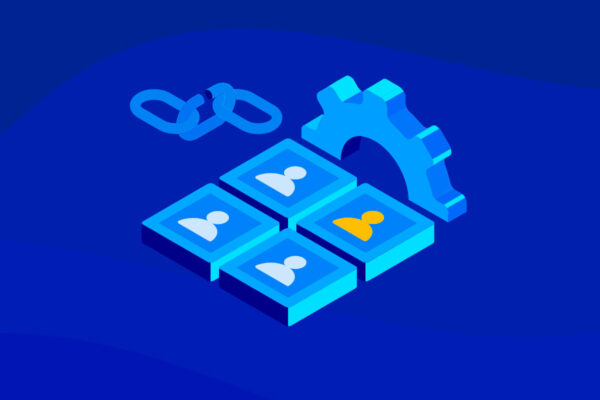7 lessons from BECA: How one MSP built a 26% faster IT team
At Kaseya DattoCon 2025, Kevin Sequeira, General Manager of the IT Operations Suite and Kaseya 365 Ops, sat down with Koby Dudley, Director of Managed Services at BECA, to talk about something every MSP leader wants to know: how to build an IT team that runs faster, smarter and happier.

Through a series of smart, sustainable tweaks — not a costly overhaul — BECA’s team became 26% more efficient. Dudley’s story is refreshingly relatable. Instead of chasing “perfect” automation, BECA focused on practical structure, better data visibility and AI that eliminates busywork rather than replacing people. These are seven lessons every MSP can learn from BECA’s journey to a leaner, more effective IT operation.
1. Build a service desk that teaches while it works
For Dudley, success starts with structure, not rigidity. BECA’s service desk runs on clear escalation guidelines, but technicians still have the freedom to think.
Tier 1 techs follow a 20-minute guideline: if they’re stuck, escalate. However, escalations are triggered automatically through workflows, not manual assignments, so no one wastes time deciding where a ticket belongs.
When tickets close, secondary technicians remain attached, creating built-in opportunities for learning. Techs can revisit old issues, see how higher-tier colleagues solved them, and grow without formal training sessions.
Highlights:
- Automate escalation by ticket status to keep the flow moving.
- Keep secondary techs attached to closed tickets to foster skill growth.
- Use escalation metrics for coaching, not performance policing.
2. Use dashboards to keep everyone accountable
Dashboards are central to how BECA stays on top of visibility. Every technician and coordinator works from a shared view that shows ticket statuses, SLA targets and workload distribution in real time. A separate coordinator dashboard focuses solely on exceptions, like tickets close to breaching SLAs or stalling in progress. By catching these early, BECA prevents minor issues from becoming customer escalations.
Highlights:
- Use shared dashboards to align your team around common goals.
- Create exception-focused views to catch SLA risks before they snowball.
- Encourage collective ownership of KPIs across all levels.
3. Save hours by eliminating tiny frictions
Small inefficiencies add up. For BECA, integrating tools to create a true single pane of glass paid huge dividends.
Using IT Glue and Datto RMM, technicians can inject passwords and launch remote sessions directly from Autotask tickets. That small change — about 30 seconds saved per action — translates into hours of reclaimed time each week across the service desk.
Highlights:
- Integrate credential management and remote access directly into tickets.
- Automate triage and routing to eliminate manual handoffs.
- Chase seconds saved, not just hours gained. They compound.
4. Keep AI practical and people-focused
Dudley’s AI philosophy is simple: use it to reduce friction, not replace people.
At BECA, Autotask AI tools like Smart Ticket Summary and Smart Writing Assistant have cut coordination time drastically. BECA’s weekly “10/10” meeting, where the team reviews tickets older than 10 days or with more than 10 hours logged, was reduced from over an hour to just 30 minutes. These AI features condense ticket histories into clear overviews, flag unresponsive customers and free technicians to focus on decisions instead of digging for context.
Additionally, IT Glue’s Smart SOP Generator captures documentation during live work, and Autotask’s Smart Ticket Triage automates tagging and categorization, processing more than 10,000 tickets without major issues.
Highlights:
- Use AI where it replaces admin work: summarizing, categorizing and documenting.
- Keep human judgment at the center of service delivery.
- Protect data privacy by using tools that keep information in-house.
5. Track metrics that motivate, not intimidate
BECA’s leadership tracks utilization, resolution time and SLA compliance, but always through a coaching lens.
The goal is improvement, not enforcement. Techs aim for 85–90% utilization, a healthy balance that avoids burnout. Weekly reviews identify outliers for conversation, not criticism. Dudley also emphasizes informal feedback loops over formal surveys, noting that many of the team’s best process tweaks came from technicians’ suggestions, not complaints.
Highlights:
- Use metrics to guide coaching, not punishment.
- Measure utilization holistically, including review and planning time.
- Rely on technician feedback to drive continuous improvement.
6. Turn meetings into momentum
When meetings are structured and data-backed, they become accelerators instead of time sinks. BECA’s 10/10 meeting reviews all tickets that meet age or time thresholds. Each tech adds a short pre-meeting note explaining delays, and the AI-generated summaries provide instant context. This cuts the meeting time in half and makes the discussions far more focused. Beyond that, BECA uses “Fun Friday” sessions to recognize team wins, reinforcing the culture of progress without pressure.
Highlights:
- Use live dashboards to guide meetings, not slides.
- Ask for short pre-notes to keep discussions focused.
- Celebrate incremental progress to keep morale high.
7. Evolve incrementally for lasting change
When BECA migrated to Autotask, Dudley resisted the temptation to bring over years of clutter. Instead, the team focused on essential workflows and refined them gradually.
Over 19 months, BECA’s system became “almost unrecognizable,” evolving through countless small improvements rather than disruptive overhauls. This method allowed consistent service quality and steady growth without burnout.
Highlights:
- Bring only current, relevant data into new systems.
- Commit to small, regular refinements instead of large rollouts.
- Review and adjust workflows monthly for steady optimization.
The takeaway for MSPs
BECA’s story proves that great operations come from steady, consistent improvements — not massive investments. From automated escalations and AI-assisted workflows to dashboards that make metrics visible, the path to a 26% faster IT team starts with structure, visibility and smart automation.
If you’re an MSP leader wondering where to start:
- Automate ticket escalations.
- Share a live SLA dashboard.
- Integrate your tools into one workspace.
- Use AI to summarize, not strategize.
Keep doing those four things, and your team will only get faster.
See why Autotask is trusted by MSPs worldwide: Request a demo.



